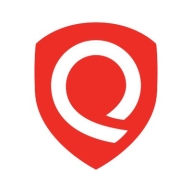

Qualys VMDR and Prisma Cloud by Palo Alto Networks compete in the cybersecurity space, with Qualys VMDR being more suitable for vulnerability management and remediation, while Prisma Cloud excels in cloud-native security for multi-cloud environments. Prisma Cloud appears to have the upper hand due to its extensive cloud integrations and runtime protection, while Qualys VMDR is favored for vulnerability management and detailed reporting.
Features:Qualys VMDR is recognized for its capabilities in vulnerability management, patch management, and automatic detection. Prisma Cloud is valued for cloud-native security features, runtime protection, and API security.
Room for Improvement:Qualys VMDR could enhance integrations with systems like ServiceNow and Jira, improve its user interface, and reduce false positives. Prisma Cloud could benefit from a more user-friendly pricing structure, improved agentless scanning, and CSPM module enhancements for better visibility.
Ease of Deployment and Customer Service:Qualys VMDR is easy to deploy in public and on-premises environments, although its support has varying user reviews. Prisma Cloud, while expansive in cloud support, needs improved role-based access controls and more responsive support compared to Qualys.
Pricing and ROI:Qualys VMDR's pricing is relatively high but offers a good ROI due to its comprehensive features. Prisma Cloud is also considered expensive, justified by its high-security level and flexibility with its credit-based licensing model. Both deliver significant ROI, though costs vary based on organizational needs.
It eliminates the need for additional hardware, making it a financially and technically sound investment.
Reputation and data security are the two most important things to a financial institution.
We may have prevented a security breach with remediation of the findings.
We saw a return on investment through significant savings in time, money, and resources.
They can respond with technical documentation or pass on the case to the next level because it requires the development of a new feature or changing a feature due to a bug.
They always help me resolve my tickets with minimal downtime.
One is always available.
We usually get on calls with tech support, and they are very helpful.
The response time takes a while.
The technical support provided by Qualys is pretty good.
It's very scalable and very easy to use.
It's scalable.
The scalability is also a 10 out of 10.
Scalability depends on the license and the number of assets being monitored.
Qualys VMDR can handle scalability, although increasing the inventory can raise the licensing costs.
Qualys VMDR's scalability is good, and the customer support is good.
I would rate it a ten out of ten for stability.
Prisma Cloud is a stable platform.
The solution is stable and is capable of covering large enterprises.
Qualys VMDR is stable.
From a developer's perspective, especially for organizations like banks developing their applications, ensuring API security before deploying them to the cloud is crucial.
Prisma Cloud is an excellent tool.
Even though documentation was available, it took a while for a new person to understand what integration meant, what will be achieved after the integration, or how the integration needed to be done on the Azure or AWS side.
It does not automate patching unless the patch management module is purchased separately.
If AI features were integrated, it could enhance the capabilities significantly.
One area where Qualys VMDR can be improved is the missing feature for deploying agents for over 1,000 assets, as we need to do it manually.
The cost was not on the higher side.
That's why a lot of our clients are shifting from cloud-native to Prisma Cloud: because of its effectiveness and because it is budget-friendly as well.
The solution is very expensive.
I would rate the pricing between seven to eight out of ten.
I have a notion that Qualys might be more expensive than Rapid7.
Qualys offers better pricing and is feature-packed compared to other tools.
The automation capabilities are excellent.
We have integrated a number of pipelines so that whenever any development is built, the image is scanned for vulnerabilities.
With this product, we can monitor all the things even if they are on different clouds - and it can be done on one platform.
The prioritization of vulnerabilities has improved our remediation efforts by around thirty to thirty-five percent.
It impacts my workflow overall, with the patch management features as it has the missing patches listed in detail, making it easier to get a comprehensive report and providing some dashboards that offer visual representation.
Qualys VMDR offers a one-stop solution for monitoring and reporting.
| Product | Market Share (%) |
|---|---|
| Prisma Cloud by Palo Alto Networks | 10.6% |
| Qualys VMDR | 2.3% |
| Other | 87.1% |


| Company Size | Count |
|---|---|
| Small Business | 34 |
| Midsize Enterprise | 20 |
| Large Enterprise | 58 |
| Company Size | Count |
|---|---|
| Small Business | 20 |
| Midsize Enterprise | 12 |
| Large Enterprise | 69 |
Prisma Cloud by Palo Alto Networks provides comprehensive cloud-native security solutions. It covers dynamic workload identity, automated forensics, and multi-cloud protection, ensuring robust security across diverse cloud platforms.
Prisma Cloud delivers advanced capabilities for managing cloud security across AWS, Azure, and GCP platforms. It offers dynamic workload identity creation, real-time monitoring, and seamless integration into CI/CD pipelines. With automation, centralized dashboards, and enhanced visibility, users effectively manage security misconfigurations and vulnerabilities. While optimizing cloud environments through runtime protection and compliance, Prisma Cloud faces challenges with its navigation, pricing, and limited automation capabilities. Users seek improvements in API security, role-based access controls, and documentation quality, emphasizing the need for enhanced customization and reporting features.
What are the important features of Prisma Cloud?
What benefits or ROI should users consider in reviews?
Industries like finance and telecom rely on Prisma Cloud for managing cloud security posture and container security. Teams utilize its capabilities across hybrid and multi-cloud settings to ensure compliance and robust threat protection. Features like misconfiguration detection and runtime monitoring are critical in promoting security objectives in these sectors.
Vulnerability Management, Detection, and Response (VMDR) is a cornerstone product of the Qualys TruRisk Platform and a global leader in the enterprise-grade vulnerability management (VM) vendor space. With VMDR, enterprises are empowered with visibility and insight into cyber risk exposure - making it easy to prioritize vulnerabilities, assets, or groups of assets based on business risk. Security teams can take action to mitigate risk, helping the business measure their actual risk exposure over time.
Qualys VMDR offers an all-inclusive risk-based vulnerability management solution to prioritize vulnerabilities and assets based on risk and business criticality. VMDR seamlessly integrates with configuration management databases (CMDB), Qualys Patch Management, Custom Assessment and Remediation (CAR), Qualys TotalCloud and other Qualys and non-Qualys solutions to facilitate vulnerability detection and remediation across the entire enterprise.
With VMDR, users are empowered with actionable risk insights that translate vulnerabilities and exploits into optimized remediation actions based on business impact. Qualys customers can now aggregate and orchestrate data from the Qualys Threat Library, 25+ threat intelligence feeds, and third-party security and IT solutions, empowering organizations to measure, communicate, and eliminate risk across on-premises, hybrid, and cloud environments.
We monitor all Container Security reviews to prevent fraudulent reviews and keep review quality high. We do not post reviews by company employees or direct competitors. We validate each review for authenticity via cross-reference with LinkedIn, and personal follow-up with the reviewer when necessary.